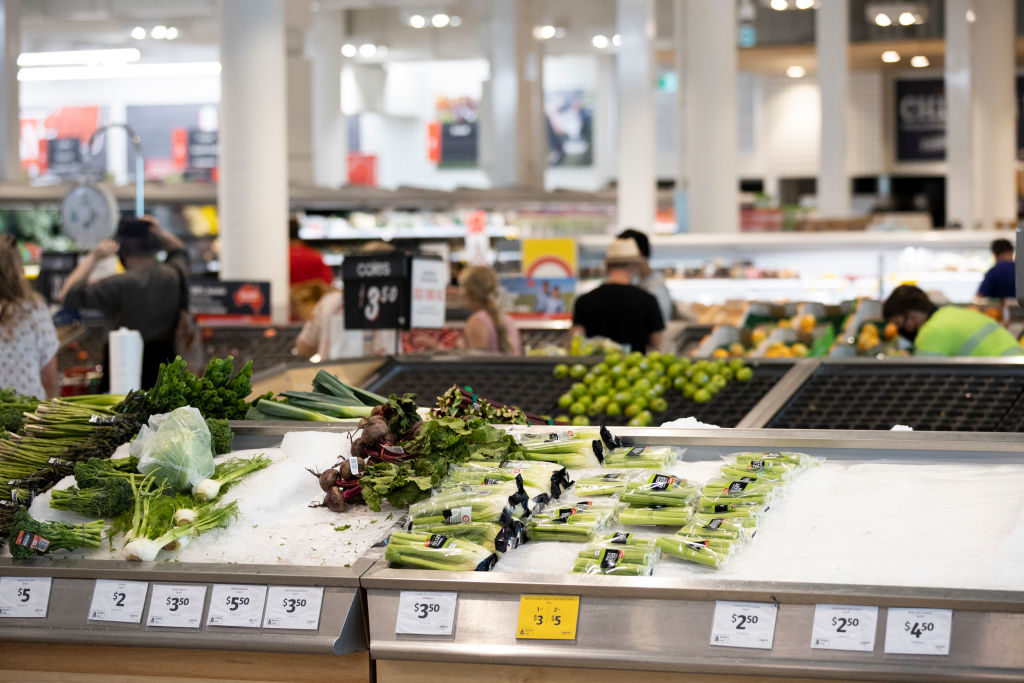
Resilience, the economy and national security are a live discussion across Australia. People can feel change in their bones, from the climate to mortgage repayments—even Australia’s place in the world. These discussions are happening on milk crates at smokos and at home around dinner tables, because big topics have a habit of raising themselves when people gather around a meal. Food brings us together, but it also goes far beyond the simple fellowship of breaking bread. Food is central to Australia’s stability and security, yet it’s too often neglected in favour of seemingly higher priorities.
The release of Australia’s defence strategic review in April was a defining moment. Rarely has a public document talked so openly about Australia’s challenging strategic environment. The review tells us that the threat of conflict in the Indo-Pacific is the highest level of strategic risk we have faced in 80 years, and that leaders need to return to fundamentals. It offers a new vision of defending Australia—one that goes beyond the military, and in which we all have a role to play. It also brings to the fore the fatigued concept of resilience, and calls our national preparedness into question.
But for a document that points squarely at the need for every part of Australia to pitch in, it was disappointing that the unclassified version didn’t mention food or agriculture. With work on a national defence strategy underway, now is the perfect time to reflect on why food should be more highly prioritised.
Agriculture and food production will play a central role in the defence strategic review’s ‘whole-of government’ and ‘whole-of-nation’ approach to security, and not just for enabling defence, but for whole-of-society resilience. Agriculture and food production are much more valuable than their 2% contribution to GDP or employment of 1.6 million people.
After all, what’s more fundamental than food? Our ability to produce it, process it and export it shouldn’t be taken for granted, nor should our ability to get what we want, when we want from a supermarket shelf. Without any one of these capabilities, Australia would find itself suddenly facing complex problems directly linked to our ability to defend ourselves and the region. Hungry populations are discontent, and discontent breeds instability. The basic capacity to feed and clothe the population, and to export that prosperity, is fundamental to the stability of our society.
Agriculture is a microcosm of Australia’s strategic vulnerabilities. It’s heavily trade exposed, vulnerable to supply chain shocks, and contends with the daily threat of devastating climate and biosecurity risks. It offers key lessons on preparedness and resilience for the rest of the nation.
Australia’s agricultural sector exports about 70% of what it produces every year. Just like the broader economy, it’s so trade exposed that if farmers can’t export their surplus produce, most will go broke. Two-way trade makes up more than 40% of Australia’s overall GDP. Stuff coming in and stuff going back out, profitably, is key to Australia’s solvency.
Profitable trade is becoming more challenging as the lines between trade and security increasingly blur and trade becomes weaponised. Our trading environment is rapidly changing as challenges to the rules-based world order grow stronger. If the commitment to economic liberalism continues to erode, the terms of trade may not be as favourable to us as they have been in the past. Australia has long enjoyed the luxury of focusing on securing favourable terms for decades, as the recent EU trade negotiations highlight, but the ability to get our products out to market at all is often overlooked. The state of Ukrainian wheat exports is an extreme example of what this could look like.
That raises the issue of supply chains—the indispensable veins and arteries that keep the sector, and the economy, alive. Elizabeth Jackson, an associate professor of supply-chain management and logistics at Curtin University, has highlighted that ‘Australia is one of the most logistically isolated major economies on earth’. We felt this reality in both world wars, when our access to world markets effectively vanished overnight and entire export industries were lost.
Soberingly, a 2003 navy report noted that Australia is still reliant on non-Australian ships for trade. The situation hasn’t improved and Australia’s merchant fleet has continued to shrink, sharpening the focus on the government’s plan to establish a maritime strategic fleet. For agriculture, the ability to import key inputs like labour, liquid fuels, animal medicine, chemicals, fertiliser and spare parts is just as important as being able to export the final product. In a potential future conflict, our solvency would depend on it.
Finally, Australian agriculture faces ever-present climate volatility and biosecurity risks. These range from mild inconveniences to crippling foot-and-mouth disease outbreaks and increasingly frequent extreme climate events that could decimate industries. Compared with some sectors, though, honest and open conversations about these risks have led to a relatively sophisticated understanding of the importance of preparedness.
Governments and industry have worked together to combat established pests and diseases and to prevent incursions of new ones. Together, they operate a biosecurity system that generates an estimated 30:1 return on every dollar invested into it. The federal government appears to have recognised this in its proposed sustainable funding model for biosecurity, which defrays funding increases across the economy. While it’s contested, it should be recognised as an example of taking a whole-of-nation approach to security.
Understanding these vulnerabilities and the role of food and agriculture in Australia’s stability and security is crucial if we are to return our focus to fundamentals. The lesson this offers for the authors of the 2024 national defence strategy is simple: investing in preparedness pays off. The sooner an honest and open conversation starts with the community about risks, the more prepared they can be.

